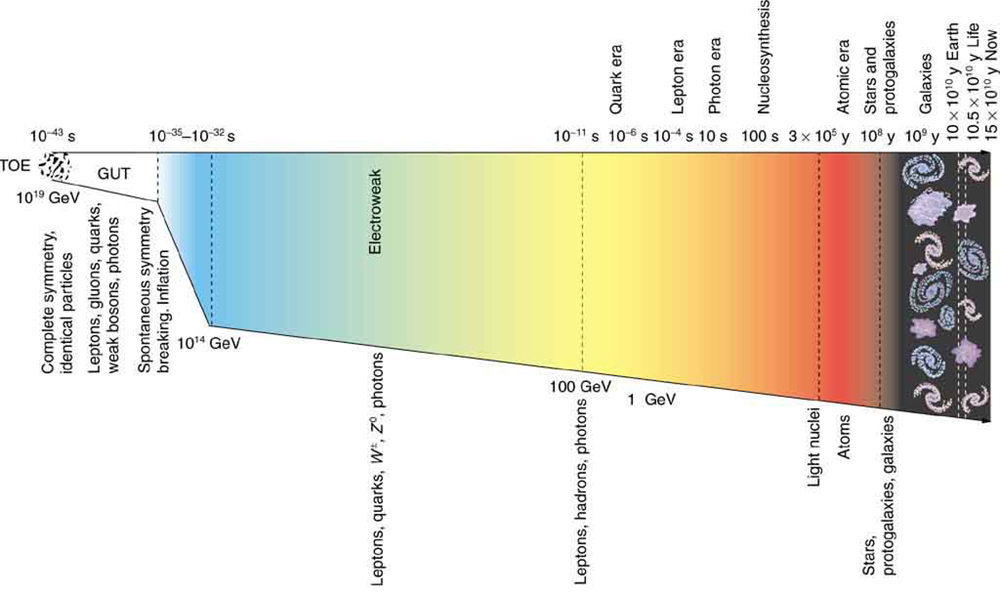| << Chapter < Page | Chapter >> Page > |
Let us now examine the various stages of the overall evolution of the universe from the Big Bang to the present, illustrated in [link] . Note that scientific notation is used to encompass the many orders of magnitude in time, energy, temperature, and size of the universe. Going back in time, the two lines approach but do not cross (there is no zero on an exponential scale). Rather, they extend indefinitely in ever-smaller time intervals to some infinitesimal point.

Going back in time is equivalent to what would happen if expansion stopped and gravity pulled all the galaxies together, compressing and heating all matter. At a time long ago, the temperature and density were too high for stars and galaxies to exist. Before then, there was a time when the temperature was too great for atoms to exist. And farther back yet, there was a time when the temperature and density were so great that nuclei could not exist. Even farther back in time, the temperature was so high that average kinetic energy was great enough to create short-lived particles, and the density was high enough to make this likely. When we extrapolate back to the point of and production (thermal energies reaching 1 TeV, or a temperature of about ), we reach the limits of what we know directly about particle physics. This is at a time about after the Big Bang. While may seem to be negligibly close to the instant of creation, it is not. There are important stages before this time that are tied to the unification of forces. At those stages, the universe was at extremely high energies and average particle separations were smaller than we can achieve with accelerators. What happened in the early stages before is crucial to all later stages and is possibly discerned by observing present conditions in the universe. One of these is the smoothness of the CMBR.
Names are given to early stages representing key conditions. The stage before back to is called the electroweak epoch , because the electromagnetic and weak forces become identical for energies above about 100 GeV. As discussed earlier, theorists expect that the strong force becomes identical to and thus unified with the electroweak force at energies of about . The average particle energy would be this great at after the Big Bang, if there are no surprises in the unknown physics at energies above about 1 TeV. At the immense energy of (corresponding to a temperature of about ), the and carrier particles would be transformed into massless gauge bosons to accomplish the unification. Before back to about , we have Grand Unification in the GUT epoch , in which all forces except gravity are identical. At , the average energy reaches the immense needed to unify gravity with the other forces in TOE, the Theory of Everything. Before that time is the TOE epoch , but we have almost no idea as to the nature of the universe then, since we have no workable theory of quantum gravity. We call the hypothetical unified force superforce .

Notification Switch
Would you like to follow the 'College physics' conversation and receive update notifications?